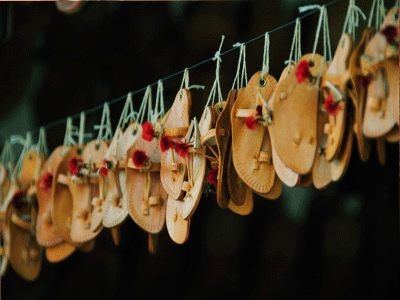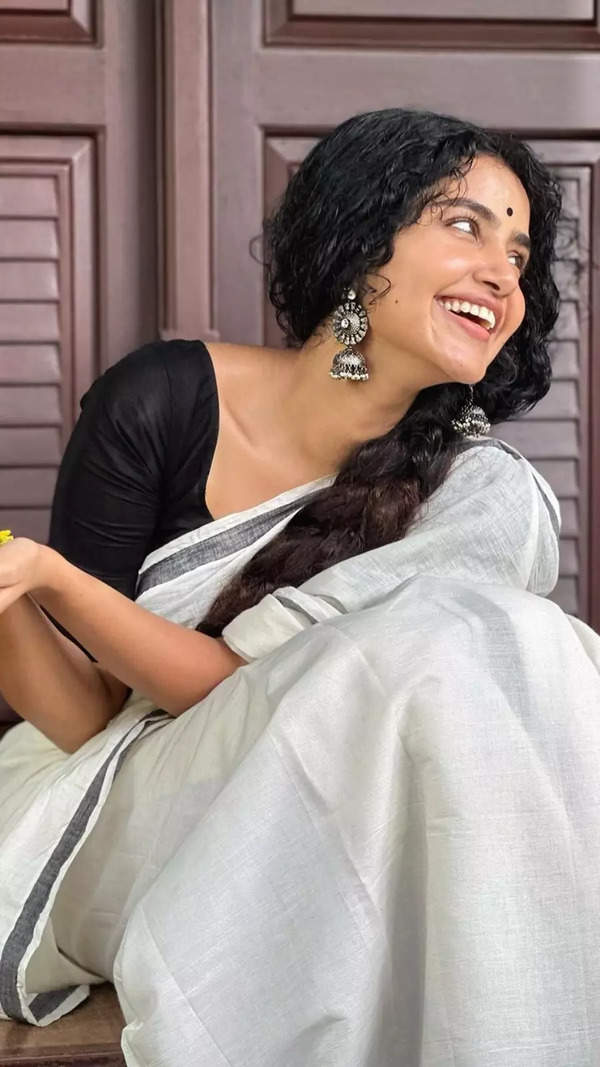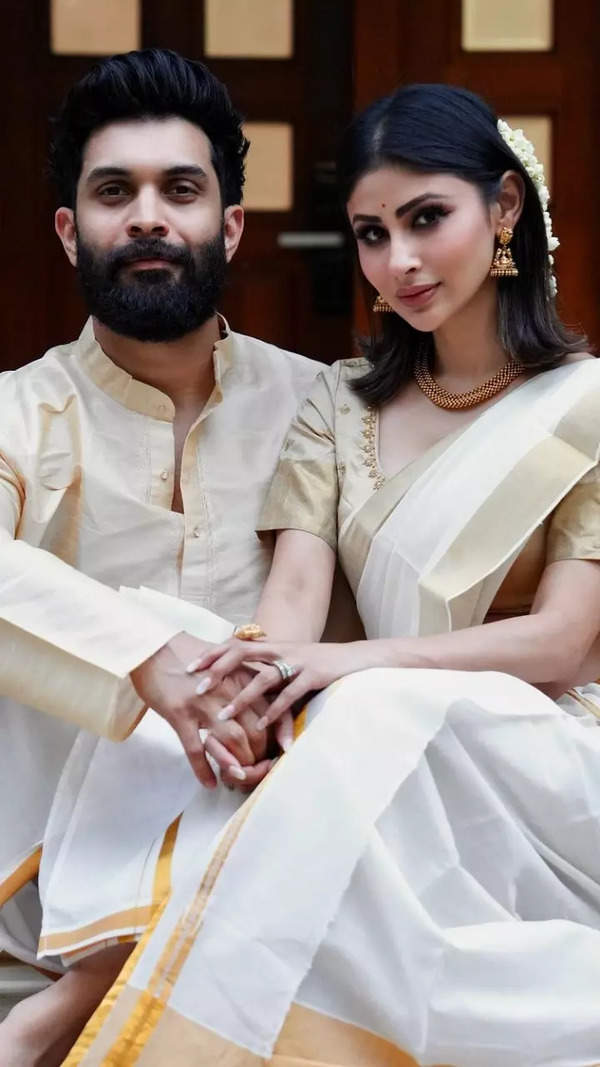Trending
This story is from February 7, 2016
Celebs want kolhapuri chappals to be promoted
Flaunted by celebs, politicians, students and the likes, Kolhapuri chappals have left their footprints all over the world thanks to their regal appearance.

Key Highlights
• With the ban on cattle slaughter spelling trouble for the city's chappal trade, local celebs and manufacturers are swimming against the tide, to keep up the tradition through alternate materials and styles.
• The industry is dying .
• The industry is dying .
Flaunted by celebs, politicians, students and the likes, Kolhapuri chappals have left their footprints all over the world thanks to their regal appearance.
The ethnic handcrafted chappal that awaits a Geographical Indication tag (that will enable eight districts of Maharashtra and Karnataka exclusive manufacture rights), however is facing the heat in its native Kolhapur, owing to the ban on cow slaughter in Maharashtra.There has been an estimated 50 per cent drop in its sales in the last one year.Kolhapuris, who swear by the age-old footwear and take pride in it, share their thoughts with Pune Times.
Filmmakers and actors sport it too
With the ban on cattle slaughter spelling trouble for the city's chappal trade, local celebs and manufacturers are swimming against the tide, to keep up the tradition through alternate materials and styles. Actor-filmmaker Devendra Choughule says, "The sudden change in rules and regulations has caused a business low for Kolhapur's chappal makers. It is unfortunate that the face of the city is in such doldrums. As celebs, we should come forth and market the product aggressively . I, for instance, include the chappal whenever relevant in my films. Once a product is promoted on celluloid it helps buyers choose better. We need to main tain the identity of our city ."
They are the face and essence of the city. It is sad that the craft is dwindling. I own two pairs and take pride in them. They go really well with denim and linen. I also have fond memories of the replica of the chappal sold as key chains. My first bicycle had it for a key chain. We need to really push and pro mote our craftsmen to keep our traditions alive.
-Bhushan Pradhan
I wear Kolhapuri chappal whenever I get a chance. They make a cool fashion statement and are one of Maharashtra's identities. It is very disappointing that the tradition isn't being carried forward. If Kolhapuris start being man ufactured outside Maharashtra, there won't be a sense of pride while wearing them in the future.
-Tejaswini Pandit
The market speaks
Dileep More, from a leading manufacturing, supplying, distributing and exporting outfit that deals with an extensive range of Kolhapuri chappals, says, "We export and sell a variety of style and designs such as typical Kapsi, paper Kapsi, Kurundvadi, Shahu, fashionable chappals and more, in different colours like natural leather colour, light and dark brown, yellow, black, red and pink colours. We use goat and buffalo leather." More adds that the industry is dying and this prompted him to quit a high paying job in a bid to revive the city's slow-dying craft.
"I took over the business from my dad to keep the tradition alive. We don't use cow leather; instead we experiment with alternate options like vegetable tanning leather and katta press leather that comes from Chennai,"adds More. He goes on to mention that chappals are believed to be good for one's health (maintains eyes and regulates back pain and diabetes). Ashok Shankar Gaikwad, president of Kolhapur Charmodhyog Samuha (cluster), points out, "Different types of leather are used to make Kolhapuri chappals. Today , the market is using leather from bulls, buffaloes, black tanning and press techniques. The market is definitely dwindling because alternate methods are not up to the market as compared to the original."
We are proud to flaunt kolhapuris, say youngsters
At a time when the fate of the city's slipper lies in limbo, solace comes from the fact that Kolhapur youngsters continue to patronize the chappal, some making it a constituent of their daily wardrobe.
Keneel Karthik Metha, a student of KIT's College of Engineering, says, "I wear these chappals frequently to college. There's a certain status and good feeling in wearing a streak of Kolhapur's local flavour everyday ." When asked if the footwear gets uncomfortable to sport daily, he says, "Contrary to what many say , Kolhapuris aren't so uncomfortable. When new, it takes a bit of warming up to them. If they feel hard on the skin, some simple oiling or a drop of moisturizer can soften the slippers."
Danish Huzruk, who moved to Dubai four years ago, has taken the city's footwear culture with him overseas. "I am a big fan of Kolhapuris. While here, I wear them on traditional occasions and Fridays for prayer." Danish has spread the infectious love for the slipper by buying pairs of them for his Dubai friends as well. "One major reason the craft is dwindling in Kolhapur is because there is more cottage industry for it outside the city . If we want to continue having our city's name attached to the legacy, as youngsters, we'd need to be more particular about patronizing slippers only made in Kolhapur," says Danish, signing off.
The ethnic handcrafted chappal that awaits a Geographical Indication tag (that will enable eight districts of Maharashtra and Karnataka exclusive manufacture rights), however is facing the heat in its native Kolhapur, owing to the ban on cow slaughter in Maharashtra.There has been an estimated 50 per cent drop in its sales in the last one year.Kolhapuris, who swear by the age-old footwear and take pride in it, share their thoughts with Pune Times.
Filmmakers and actors sport it too
With the ban on cattle slaughter spelling trouble for the city's chappal trade, local celebs and manufacturers are swimming against the tide, to keep up the tradition through alternate materials and styles. Actor-filmmaker Devendra Choughule says, "The sudden change in rules and regulations has caused a business low for Kolhapur's chappal makers. It is unfortunate that the face of the city is in such doldrums. As celebs, we should come forth and market the product aggressively . I, for instance, include the chappal whenever relevant in my films. Once a product is promoted on celluloid it helps buyers choose better. We need to main tain the identity of our city ."
Actor-host-comedian Hrishekesh Joshi flaunts a pair of Kolhapuri chappals whenever he gets a chance. "You can easily say that I carry a pair with me everytime. I make sure I wear one to a five-star hotel too. I am not showing off; the point is that I am proud of my heritage and have no problem showcasing it. I always buy pairs for friends and relatives when in Kolhapur," adds Joshi. Kolhapuri chappals are synonymous with Kolhapur.
They are the face and essence of the city. It is sad that the craft is dwindling. I own two pairs and take pride in them. They go really well with denim and linen. I also have fond memories of the replica of the chappal sold as key chains. My first bicycle had it for a key chain. We need to really push and pro mote our craftsmen to keep our traditions alive.
-Bhushan Pradhan
I wear Kolhapuri chappal whenever I get a chance. They make a cool fashion statement and are one of Maharashtra's identities. It is very disappointing that the tradition isn't being carried forward. If Kolhapuris start being man ufactured outside Maharashtra, there won't be a sense of pride while wearing them in the future.
-Tejaswini Pandit
The market speaks
Dileep More, from a leading manufacturing, supplying, distributing and exporting outfit that deals with an extensive range of Kolhapuri chappals, says, "We export and sell a variety of style and designs such as typical Kapsi, paper Kapsi, Kurundvadi, Shahu, fashionable chappals and more, in different colours like natural leather colour, light and dark brown, yellow, black, red and pink colours. We use goat and buffalo leather." More adds that the industry is dying and this prompted him to quit a high paying job in a bid to revive the city's slow-dying craft.
"I took over the business from my dad to keep the tradition alive. We don't use cow leather; instead we experiment with alternate options like vegetable tanning leather and katta press leather that comes from Chennai,"adds More. He goes on to mention that chappals are believed to be good for one's health (maintains eyes and regulates back pain and diabetes). Ashok Shankar Gaikwad, president of Kolhapur Charmodhyog Samuha (cluster), points out, "Different types of leather are used to make Kolhapuri chappals. Today , the market is using leather from bulls, buffaloes, black tanning and press techniques. The market is definitely dwindling because alternate methods are not up to the market as compared to the original."
We are proud to flaunt kolhapuris, say youngsters
At a time when the fate of the city's slipper lies in limbo, solace comes from the fact that Kolhapur youngsters continue to patronize the chappal, some making it a constituent of their daily wardrobe.
Keneel Karthik Metha, a student of KIT's College of Engineering, says, "I wear these chappals frequently to college. There's a certain status and good feeling in wearing a streak of Kolhapur's local flavour everyday ." When asked if the footwear gets uncomfortable to sport daily, he says, "Contrary to what many say , Kolhapuris aren't so uncomfortable. When new, it takes a bit of warming up to them. If they feel hard on the skin, some simple oiling or a drop of moisturizer can soften the slippers."
Danish Huzruk, who moved to Dubai four years ago, has taken the city's footwear culture with him overseas. "I am a big fan of Kolhapuris. While here, I wear them on traditional occasions and Fridays for prayer." Danish has spread the infectious love for the slipper by buying pairs of them for his Dubai friends as well. "One major reason the craft is dwindling in Kolhapur is because there is more cottage industry for it outside the city . If we want to continue having our city's name attached to the legacy, as youngsters, we'd need to be more particular about patronizing slippers only made in Kolhapur," says Danish, signing off.
End of Article
FOLLOW US ON SOCIAL MEDIA









